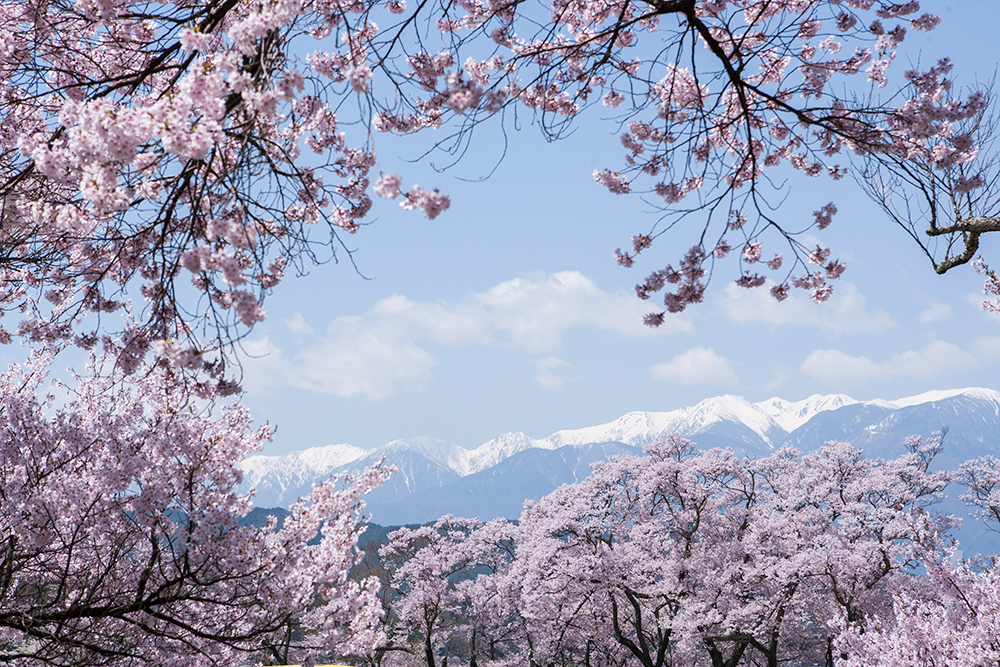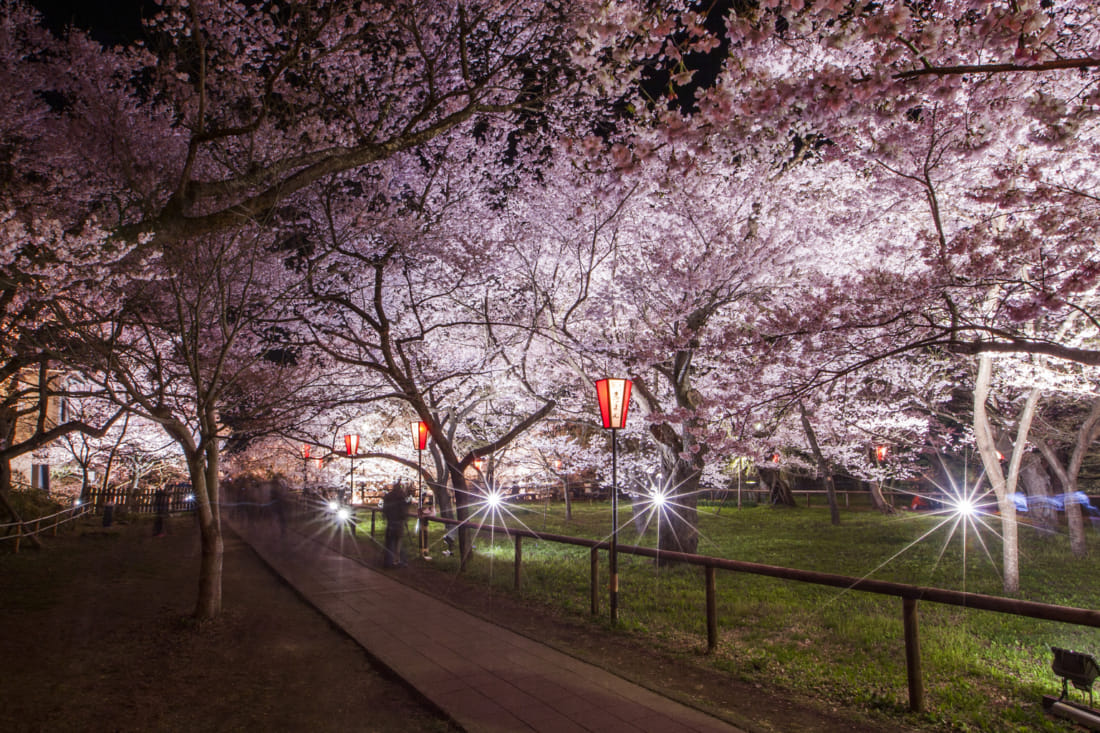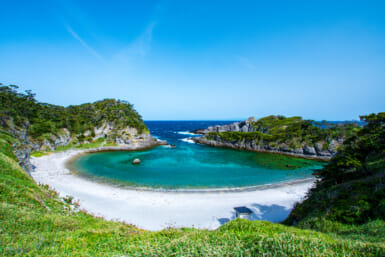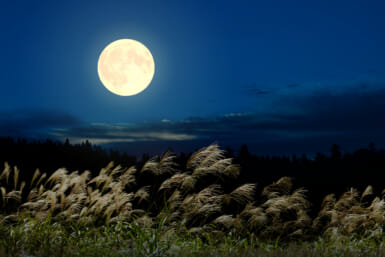In southern Nagano Prefecture between the Southern and Central Alps is the scenic Ina Valley. The rapid waters of the Tenryu River, referred to as the “Violent River” in Nara period records, flows through the Ina Valley. Surrounded by snowcapped mountains, in spring the area comes alive with cherry blossoms – or sakura.
This historic area draws in droves of Japanese onlookers every year, however the intense beauty considered to be one of Japan’s best cherry blossom-views has yet to be discovered by international travelers.
Samurai Blossoms at the Ruins of Takato Castle
Any cherry blossom tour of Ina Valley starts in Ina city, the area’s second-largest city. This former samurai town was home to Takato Castle, which was destroyed in 1871 when the decree was issued to turn all feudal domains into prefectures. The samurai deplored the Meiji government’s action, and in act of rebellion planted 1,500 cherry trees to hide their horses.
These 150-year-old trees still stand. The distinct species of cherry tree is found only in Ina city, and blossom a different shade of pink than any other sakura in Japan. It is even said that the trees are the color of the blood of the samurais that planted them.
People can enjoy the trees in the daylight and at the night they are illuminated. Takato Castle is considered one of the three best places in Japan to see cherry blossoms, along with Hosaki Park in Aomori and Yoshinoyama in Nara. The castle hosts a festival from the start to finish of April every year (except for 2020 – the festival is canceled to help slow the spread of coronavirus).
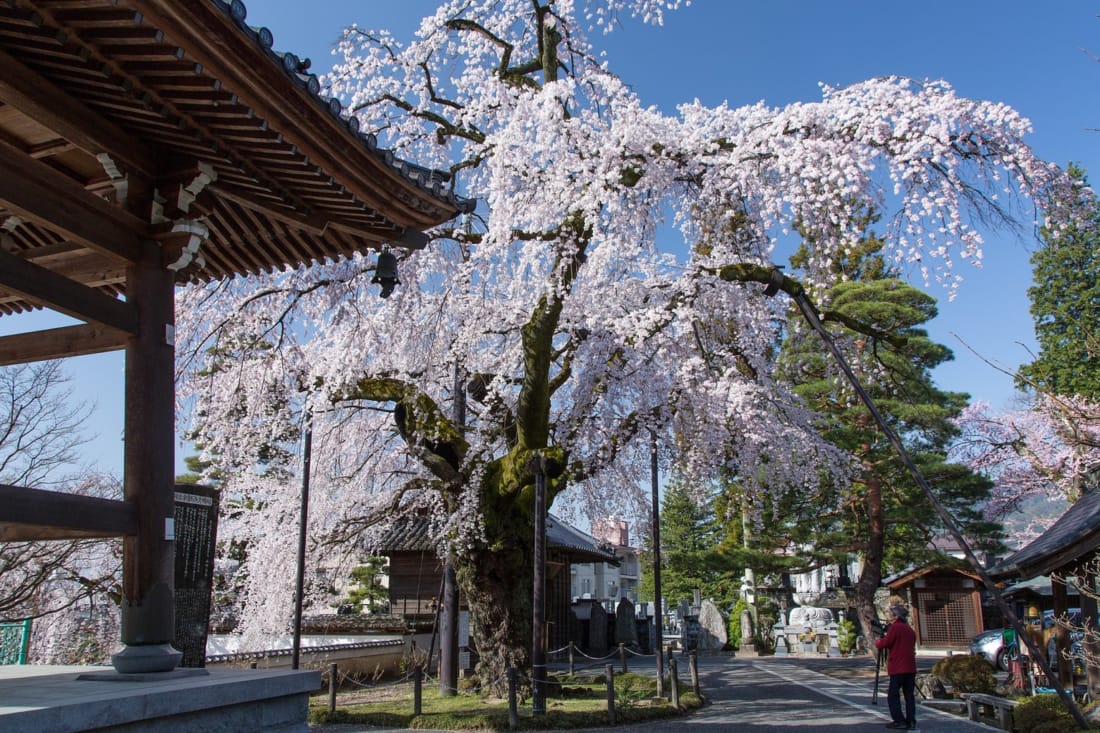
Amidaji cherry tree
Japan’s Oldest Cherry Trees at Iida City
The next place to visit in the Ina Valley is Iida city, the largest urban area in the valley. Like Ina city, the trees here also have witnessed important moments in history as they are among the oldest trees in Japan, with the ancient branches of many specimen propped up by poles.
On top of that, Iida city has the highest density of cherry trees in all of Japan. At night the trees are all lit up, and viewing them either during the day or night is a pleasure. You can take in their splendor by yourself or you can hire a guide from Sakura-Mori guided tours.
The city is home to five historical trees that people come to see specifically. The youngest among the five old trees is the 350-year-old Butai cherry tree. The tree is particularly popular as it offers grandiose views of mountains in the background. The massive Oubaiin weeping cherry tree stands 16 meters tall and has a circumference of 5.5 meters. It is also known for its dark pink color.
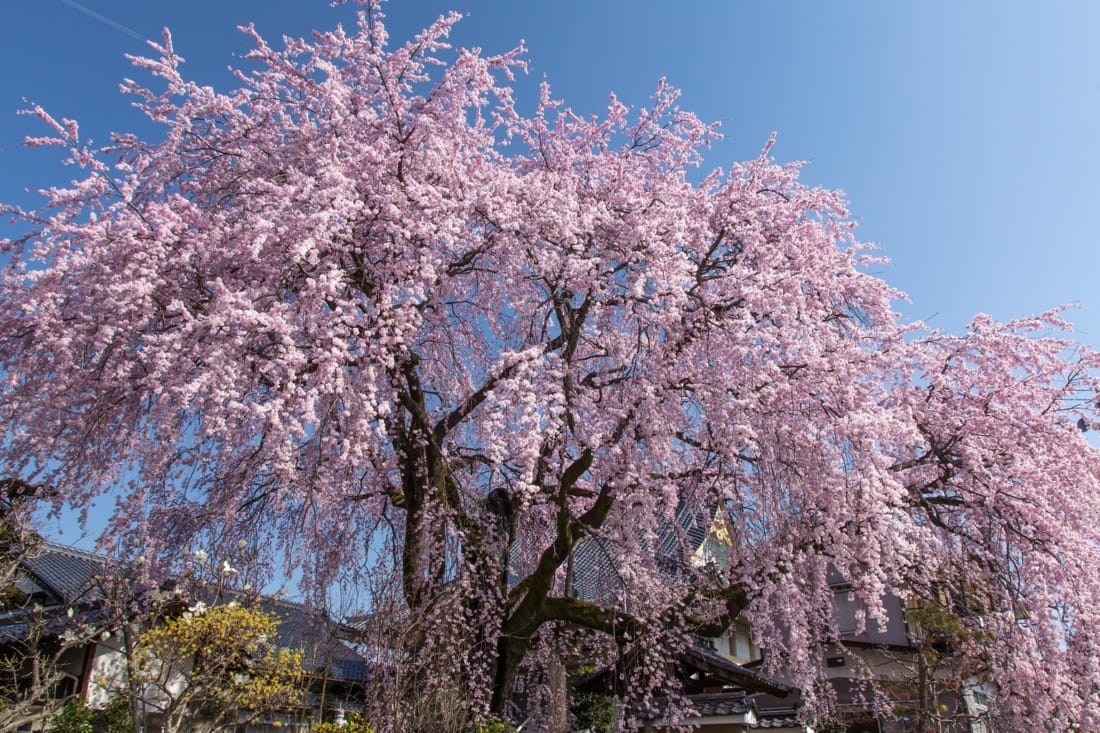
The Amidaji weeping cherry tree is known for its exquisite shape. It has a circumference of 4.2 meters and reaches 11 meters in height, but the branches from tip-to-tip spread out more than ten meters. It was planted by hand by the shogun of the local castle.
A famous statue of Buddha sets underneath the Senshoji weeping cherry tree. It is as if the tree is providing shade and a roof for Buddha. Finally, the grandest and oldest of them all is the Yasutomi cherry tree. It is 450 years old and stands 20 meters tall with a trunk circumference of 6.4 meters round.
From trees with historic past to unique species that are considered some of the most beautiful, a visit to the Ina Valley will become a cherry tree-viewing memory to cherish forever. Now that is an excellent spring getaway, which, unlike some of the trees, will not leave you weeping,
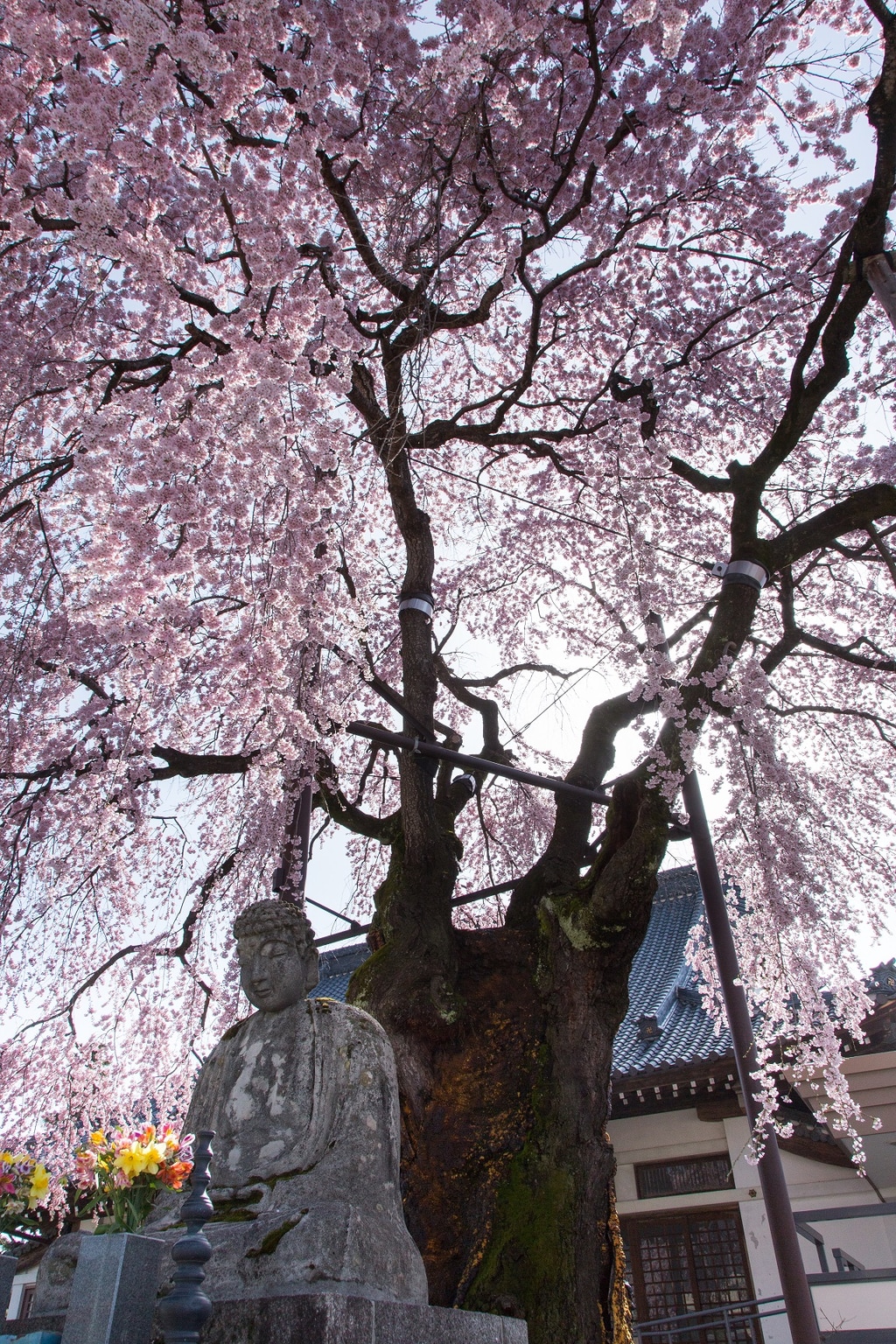
Access: Both Ina City and Iida City are located along the Iida Train line. From Shinjuku station take the Azusa Express for two and half hours to Okaya Station. Transfer to the Iida line. Ina is about 50 minutes along the route, whereas Iida is another hour further.
The train line can also be accessed from Tokyo Station on the Tokai Kodama Shinkansen to Toyohasshi (2 hours) where you can transfer to the Wide View Express train to Iida City, which takes two and half hours. Between IIda and Ina cities there is a local train that takes one and half hours. Also there are buses that leave from Shinjuku Bus terminal to both cities. For Ina it takes about three and half hours. For Iida it takes about four hours and twenty minutes.
In Iida City the trees are all within walking distance from the train station. In Ina City, from the train station take a bus for 20 minutes to the Takato Eki (station) and walk 10 minutes to the Castle Park.

